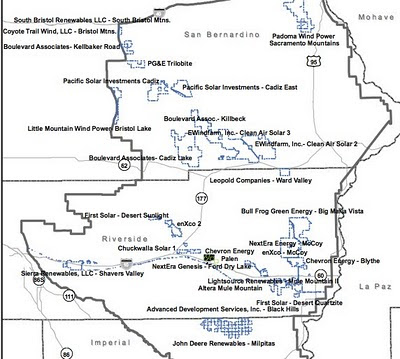Initial Ridgecrest Solar Workshop Read-Out
A reader of this blog posted a brief summary of the Ridgecrest Solar Power Project public workshop held 23/24 April to address questions about the proposed site on issues of water, soil, transportation etc (pretty much everything except biological resources, which will be covered on 3 and 4 May. See the original post here .) What is striking is that the water usage of the Ridgecrest site, which is a dry-cooled plant (so presumably it is much more water efficient than other proposed solar sites) would still have enormous impacts on ground water. Ridgecrest's consumption of approximately 150 acre feet a year is dwarfed by the consumption of the proposed Abengoa Solar site near Barstow and Helendale, which would consume nearly 1,077 acre-feet per year. If you could not make it to the 23/24 April Public Workshop, you can attend the 3rd or 4th May workshop focused on biological resources at Ridgecrest City Hall at 8AM. Comment from Laura about the recent public workshops: --


